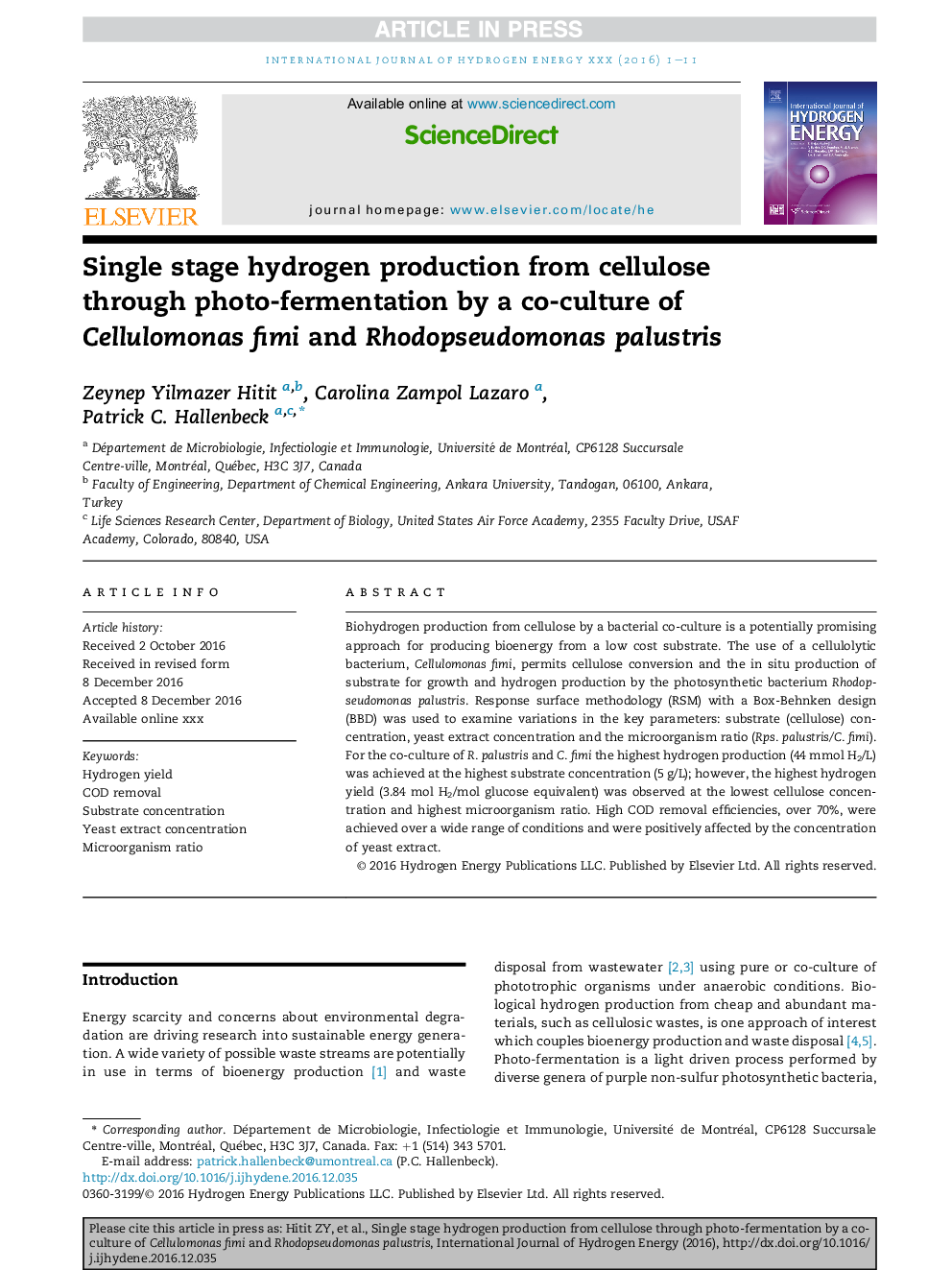| Article ID | Journal | Published Year | Pages | File Type |
|---|---|---|---|---|
| 5146096 | International Journal of Hydrogen Energy | 2017 | 11 Pages |
Abstract
Biohydrogen production from cellulose by a bacterial co-culture is a potentially promising approach for producing bioenergy from a low cost substrate. The use of a cellulolytic bacterium, Cellulomonas fimi, permits cellulose conversion and the in situ production of substrate for growth and hydrogen production by the photosynthetic bacterium Rhodopseudomonas palustris. Response surface methodology (RSM) with a Box-Behnken design (BBD) was used to examine variations in the key parameters: substrate (cellulose) concentration, yeast extract concentration and the microorganism ratio (Rps. palustris/C. fimi). For the co-culture of R. palustris and C. fimi the highest hydrogen production (44Â mmol H2/L) was achieved at the highest substrate concentration (5Â g/L); however, the highest hydrogen yield (3.84Â mol H2/mol glucose equivalent) was observed at the lowest cellulose concentration and highest microorganism ratio. High COD removal efficiencies, over 70%, were achieved over a wide range of conditions and were positively affected by the concentration of yeast extract.
Related Topics
Physical Sciences and Engineering
Chemistry
Electrochemistry
Authors
Zeynep Yilmazer Hitit, Carolina Zampol Lazaro, Patrick C. Hallenbeck,
